This month we visited the Melbourne Treatment Plant at Werribee, to catch up with the return of the Summer waders.
Early on we were really interested to see masses of mud-bottle nests, made by Fairy Martins, under the eaves of one of the few buildings. We were also most surprised to see a number of them occupied by House Sparrows.
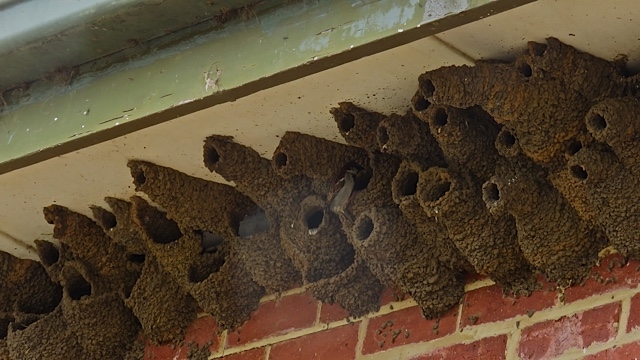
Fairy Martins’ nests .. find the Sparrow
We saw a number of raptors, some quite close up, but not a great variety or number of water birds, apart from several hundred Chestnut Teal… and no waders.
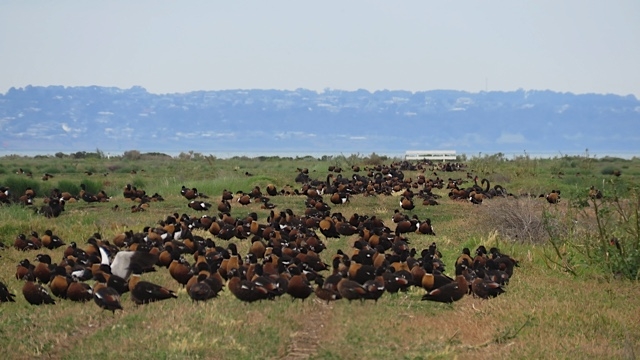
Chestnut Teal
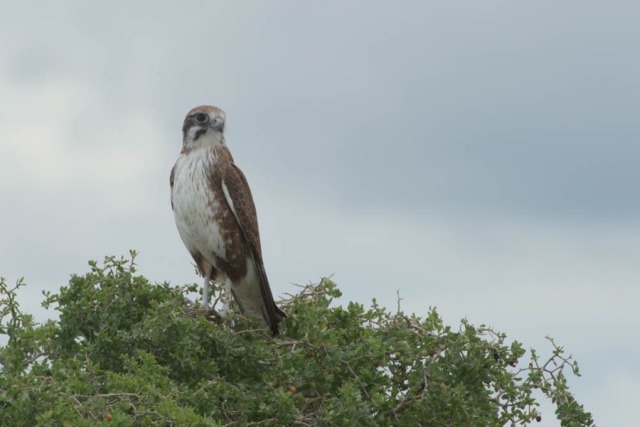
Brown Falcon
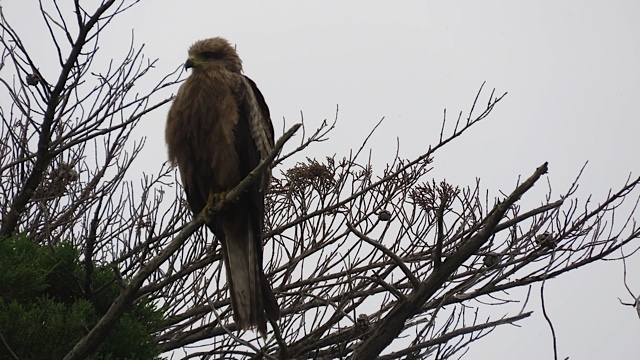
Whistling Kite

We had morning tea and lunch in locations that were unusually quiet, but then another birdwatcher told us about a great spot for waders, which we had bypassed. So, finally, scores of waders, mainly Red-necked Stints and Curlew Sandpipers. However also, thanks to the eagle eye of Lynne Bunning, a rare vagrant Red-necked Phalarope, a first for all of us…called in birding circles ‘a Lifer’.
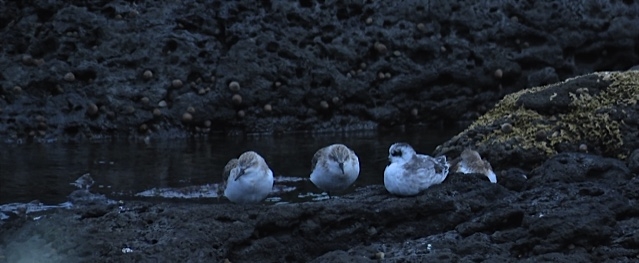
Red-necked Phalarope, third from the left, with Red-necked Stints. All are in non-breeding plumage so don’t have red necks
We met a keen, and very young, birdwatcher there who had been looking for it for much of the day and missed it!
We also saw three Common Terns which are nor common here.
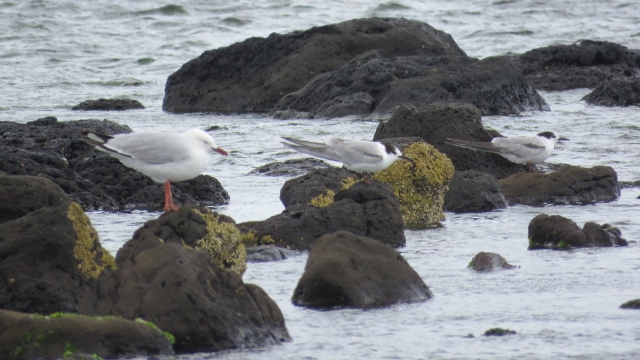
A Silver Gull and two Common Terns
As we were leaving we were farewelled by a couple of the very striking Pied Oystercatchers.

We all went home very happy.
Below are all the birds identified:
- Cape Barren Goose
- Black Swan
- Australian Shelduck
- Pacific Black Duck
- Chestnut Teal
- Musk Duck
- Great Cormorant
- Little Black Cormorant
- Australian Pelican
- White-faced Heron
- Australian Ibis
- Straw-necked Ibis
- Wedge-tailed Eagle
- Swamp Harrier
- Black Kite
- Whistling Kite
- Australasian Swamphen
- Pied Oystercatcher
- Masked Lapwing
- Curlew Sandpiper
- Red-necked Stint
- Red-necked Phalarope
- Common Tern
- Great Crested Tern
- Crested Pigeon
- Horsfield’s Bronze-Cuckoo
- Brown Falcon
- Galah
- Superb Fairywren
- Red Wattlebird
- White-plumed Honeyeater
- White-fronted Chat
- Yellow-rumped Thornbill
- Australian Magpie
- Willie-wagtail
- Magpie-lark
- Little Raven
- Eurasian Skylark
- Welcome Swallow
- Fairy Martin
- Australian Reed-Warbler
- Golden-headed Cisticola
- European Starling
- Common Myna
- Australasian Pipit
- European Goldfinch
- House Sparrow
- Zebra Finch
Next month the bird walk is a combined flora and fauna ramble before the Christmas barbecue. In January, I plan to lead a walk “somewhere”. Please contact me directly if you wish to come.
There are a few unusual Rainbow Lorikeets which appear to be resident in Aireys inlet. They have one or more yellow feather, or bits of yellow in their tail feathers.
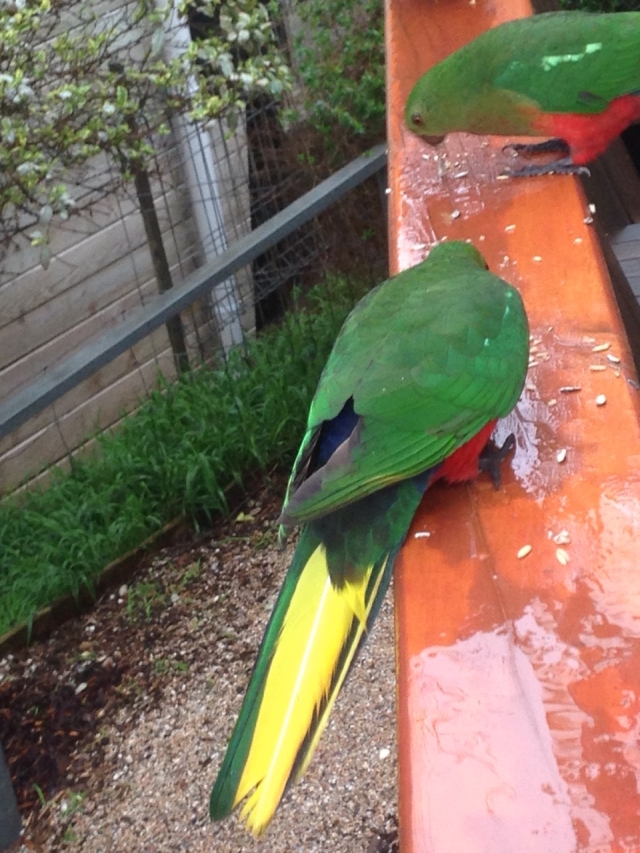
King Parrot with yellow feather
The explanation is as follows by Tania Ireton from Birdlife Bayside:
For most birds, the green in the feathers is due to a combination of yellow feathers with a structure in the feather that reflects blue light, leading to the perception of green. If the structure that reflects blue is removed then the feather(s) will appear yellow. If the yellow pigment is removed and the structure retained then the feather(s) will appear blue. If both the pigment and structure is removed then the feather(s) will appear yellow. This is seen most readily in captive-bred budgerigars which are normally green and yellow. The feature you describe could be passed on to offspring.
In late October, at Allen Noble Sanctuary, I heard the delightful, “oft repeated, silvery ‘falling-leaf’ call” (as described by Graeme Pizzey in Birds of Australia), of a White-throated Gerygone. I followed the call around the sanctuary, but the elusive bird could only be heard. I have never heard or seen one in our area before.
Ellinor Campbell (including all photos with the exception of the King Parrot which was taken by Greg Walsh)